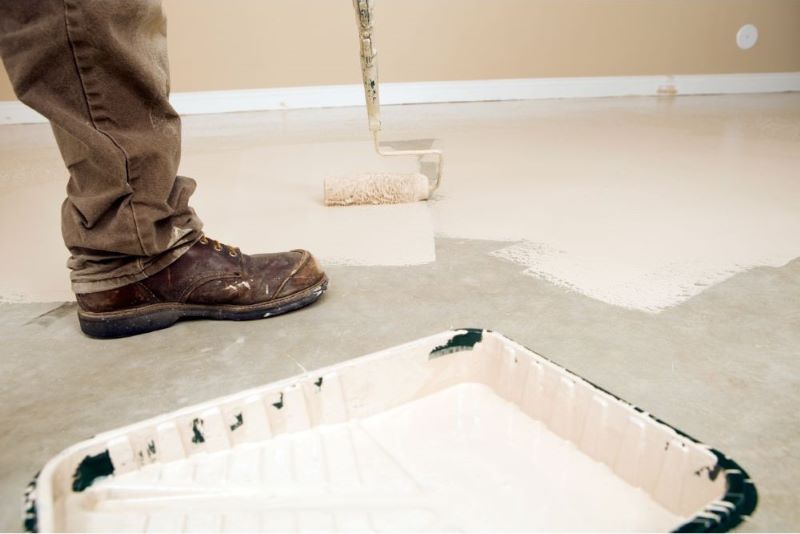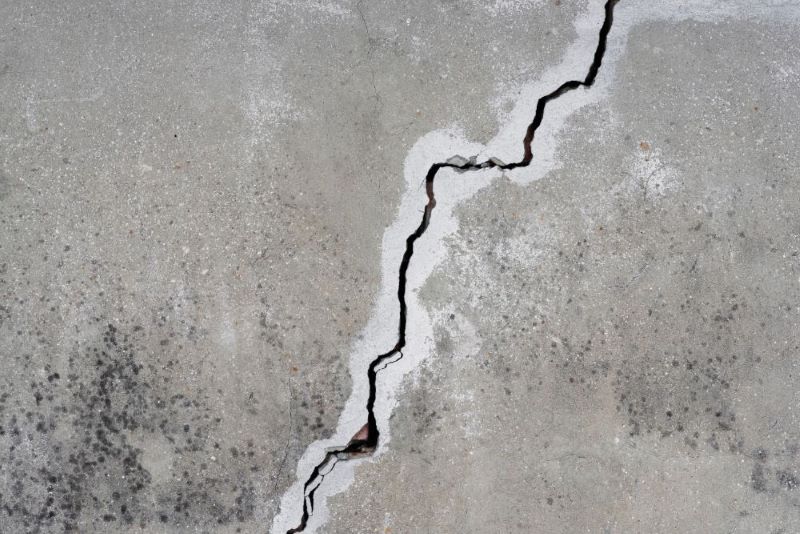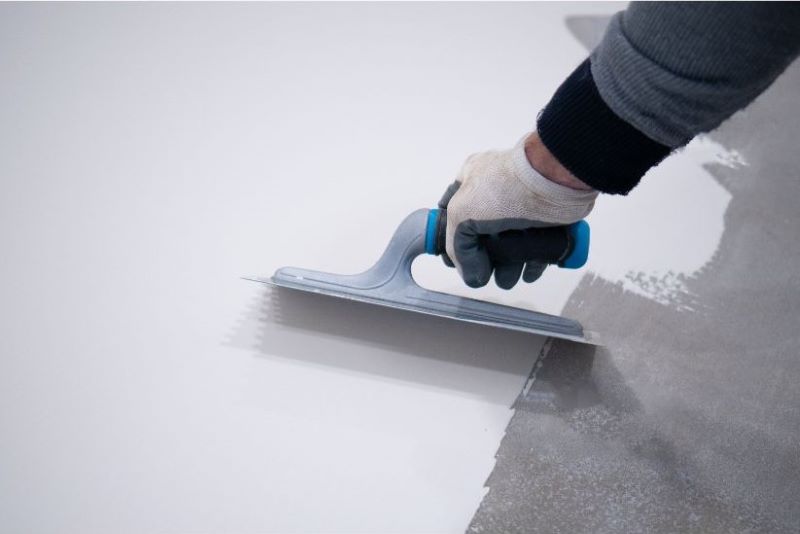A fresh coat of paint can make just about any surface seem amazing, and concrete is no exception. Paint is a good alternative for instantly adding colour to dull grey concrete, depending on the application and desired style.
However, is it a good idea to paint concrete? If you choose to paint, how would you proceed with painting concrete? Read below for the answers to these questions about concrete painting.
Is It Possible to Paint Concrete?
Paint may be applied to almost any solid concrete surface. This covers both external surfaces like patios, pathways, and pool decks as well as interior floors and walls. Just make sure the surface is clear of any sealants or coatings that can hinder the paint’s application.
Painting concrete is not the ideal option for high-traffic areas like concrete driveways because it is a surface layer that is prone to scratches. An acid-based stain or dry-shake colour hardener will give outstanding durability for these applications.
To ensure that the paint sticks well, you must carefully prepare the surface before painting it. The right tools, such as grinders and cleaning solutions, are needed for this time-consuming process.
Benefits of Painting Concrete
Painting concrete is the best option if you are looking for something that is:
- Aesthetic
- Cost-effective
- Covers the concrete
- Gives adequate coverage
- Maintains cleanliness
- Prevents oil stains
- Prevent spalling concrete
- Provides a wide range of colour options
- Simple to use
Steps in Painting Concrete
Step 1: Remove Any Concrete Debris
To clear dirt or loose concrete, use a brush with firm bristles. When working on your outdoor concrete, pull weeds and moss from your pathway’s cracks. To ensure that nothing is left on the concrete, use a power washer. Then let the concrete entirely dry.
Step 2: Seal Cracks and Holes
Use concrete cement and a putty knife to seal minor cracks or holes. Give it time to recover. As directed on the packaging, apply the product and let it dry. You will sand them later, so don’t stress about making them flawless.
Step 3: Smooth Out the Sand
Before painting, try to smooth down the surface as much as you can. Sand out any bumps or uneven areas. If you’re working indoors, use a vacuum to remove any sanding residue. Wear gloves, safety glasses, and a dust mask at all times.
Step 4: Prepare The Concrete
The manufacturer’s instructions should be followed when preparing the surface with an etcher, degreaser, and concrete cleaner. If necessary, give the concrete another power washer rinse before moving on to this step. Wear safety gear at all times when handling strong chemicals.
Step 5: Apply Primer and Paint
Use a concrete sealing primer to cover any rust patches, and allow it to fully dry before painting. Primer is already included in the solution of some paints. If so, you can start painting.
Depending on what you’re painting, choose an exterior or interior non-skid concrete paint.
Common Mistakes in Painting Concrete
The following are some of the mistakes in painting concrete
Not Preparing Your Concrete Correctly
When it comes to painting concrete surfaces, the preparation is at least as important as painting anything else. Concrete is porous, so cleaning the concrete surface before applying polyurea coatings is important because dirt, dust, debris, moisture, and other things can easily seep into its pores and cracks. Also, a high-pressure washer can cause fracturing, pitting, spalling, and other problems on concrete. That is why before painting, be sure to do the necessary prep work, which includes:
- Cleaning the area
- Sweeping and mopping the concrete
- Scraping and sanding old paint
- Vacuuming any remaining debris
- Filling gaps and cracks
- Priming the concrete
Wrong Product
Make sure your product is, at minimum, intended for either indoor or outdoor use based on where your concrete is located. Concrete paint intended for outdoor use typically contains more volatile organic compounds (VOCs), which can be harmful to your health when inhaled. To reduce this risk when painting within, use an epoxy floor paint that has zero or minimal volatile organic compounds.
Not Enough Coverage
If you want to prevent not having enough coverage, measure the surface area of your concrete surface precisely and carefully analyse the coverage rate of the surface paint you intend to buy. Paint will soak into well-prepared surfaces, so it’s better to estimate a little bit more and store any excess than rush back to the store and risk damaging your concrete surface.
Not Enough Time to Set and Dry
To give the paint enough time to set and dry, you’ll need to take extra care while painting your concrete surface. The epoxy concrete floor paint might take up to 48–72 hours to completely dry, so give yourself a few days to avoid walking on this area before doing so. If you don’t give the paint time to dry, you could smear the topcoat or contaminate the surface.
Painting Concrete in an Unsuitable Environment
You may experience problems at different stages of the process and get disappointing outcomes if the environment is excessively hot, chilly, humid, or dry. You might have to wait until the weather is favourable to paint.
Summary
You now understand whether painting concrete is a good idea and how to paint it properly. It’s important to pay attention to the recommended preparation and application processes when painting concrete. The surface you’re working on will also determine the best type of concrete paint or stain to use. Think about the advantages of painting concrete surfaces before you decide to do the work yourself or look for painting professionals in Perth.



